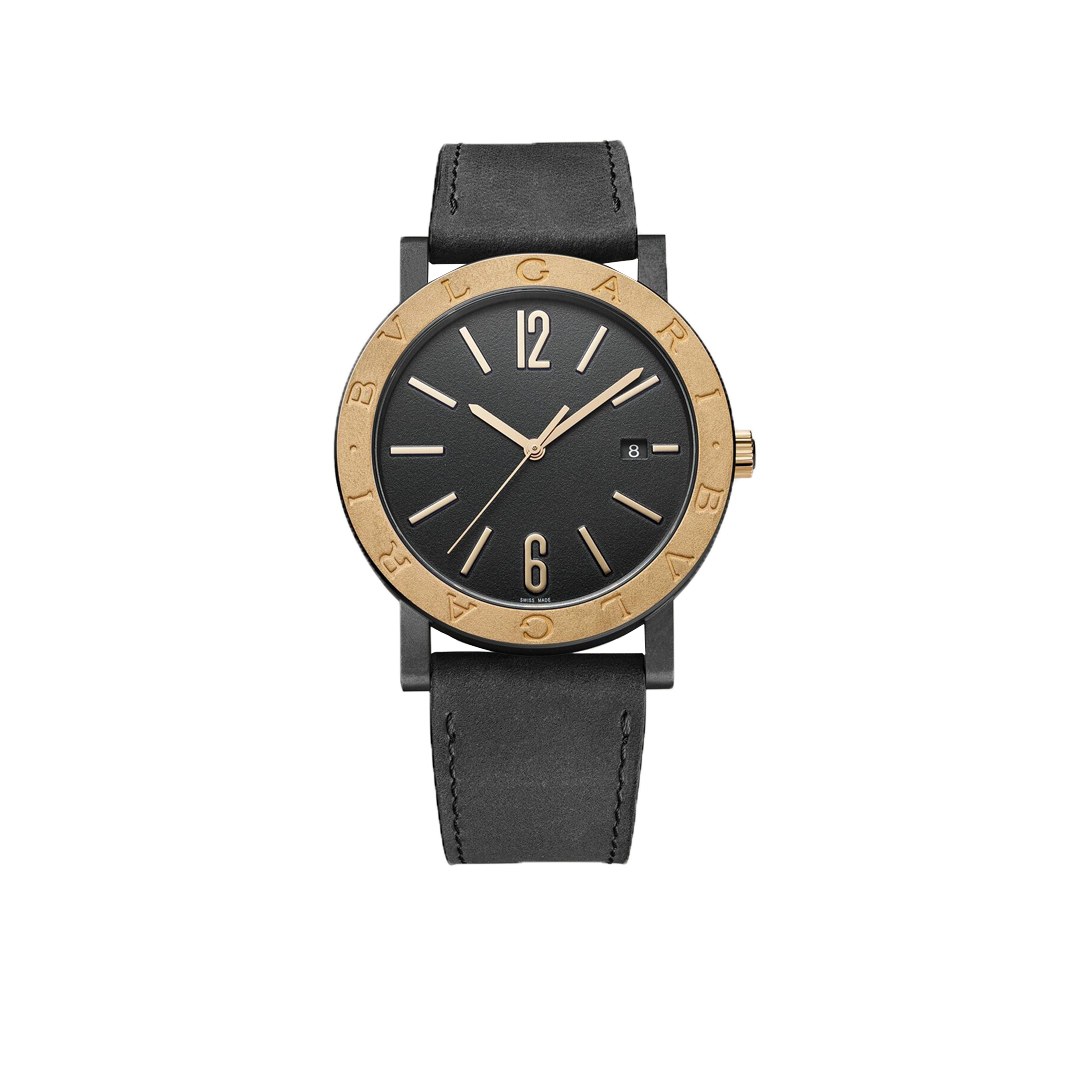
Get to Know Gérald Genta, the Man Who Designed the Royal Oak and Nautilus
While attending the 1976 edition of Basel Fair, the watch world’s largest trade show, he took himself out to lunch. He spotted a group of Patek Philippe executives eating in the corner opposite him and, suddenly struck by inspiration, asked his waiter for a pen. The Nautilus was born on a napkin a few minutes later. The design takes after a ship’s porthole, according to Genta—the two slight protrusions on each side made to look like hinges.
Bvlgari-Bvlgari
While Genta didn’t create the original Bvlgari-Bvlgari, he updated it to the version we know today. The “Bvlgari” running twice around the bezel was borrowed from an old Roman coin with an inscription circling the rim. “In the beginning [Bvlgari] thought the design was crass,” Genta said.
Initial dislike is not unusual for a Genta design, though. The Royal Oak was at first unthinkable—a wildly expensive stainless steel watch shaped like a stop sign. It took several years for the piece to catch on and for Audemars to even sell 1,000 of its now-iconic watches. The Bvlgari-Bvlgari went through the same process: the watch later met with great success, which it continues to enjoy down to this day, according to Genta (and Instagram users).
IWC Ingénieur
1976 was a big year for Genta. In addition to the Nautilus, IWC also tapped him to reinvent the Ingénieur. And, boy, does this one look familiar. Genta stuck with the same design codes that made the Royal Oak such a success. The designer stripped away any design on the bezel, leaving in its place exposed screws like the ones seen on the Royal Oak.
The Ingénieur, strangely enough, was designed with scientists and technicians in mind, and it came with a high level of resistance to magnetism. Genta’s Ingénieur was capable of withstanding 80,000 amperes per meter—higher than the wattage most stun guns pack.
Grande Sonnerie Retro
All the while, Genta went through a lather-rinse-repeat process of launching and then selling off brands. He founded his first, eponymous line in 1969 and immediately got to work on some funky stuff. Like in 1980, when he signed a deal with the Walt Disney Company and started slapping characters on highly complicated watches. Want an image of Mickey Mouse right alongside your tourbillon? Look no further than the Gérald Genta brand and its “Fantasy” pieces.
But by far the crown jewel of Genta’s brand was the Grande Sonnerie Retro he designed in 1994. At the time, the watch—with its Westminster-replicating chime, minute repeater, perpetual calendar, and tourbillon—was the most complicated in the world. (Not to mention its golden case, tiered like an indulgent wedding cake, that looks like it was stolen straight from a chest of royal jewels.) It sold for $2 million.
A few years later, Genta sold his brand to Bvlgari in 1998. No matter. In 1999, Genta started a new brand and named it Gérald Charles. He sold that brand a couple years later and dedicated the rest of his life to painting before passing away in 2011 at 80. But if the popularity of watches like the Royal Oak and Nautilus are any indication, Genta’s legacy will live on in perpetuity.
Article written by Cam Wolf #GQ












